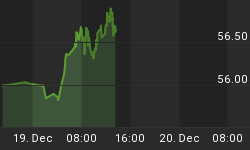As outlined in a July 22 video, there are still numerous reasons to be bullish relative to the intermediate-term outlook for stocks. However, there has been significant deterioration to the short-term picture in the last three trading sessions. With the S&P 500 down 21 points and on the technical ropes, the Wall Street Journal ran the following before the markets closed on Tuesday:
Federal Reserve officials, impatient with the economy's sluggish growth and high unemployment, are moving closer to taking new steps to spur activity and hiring.
The S&P 500 responded with a 9 point rally into the close. The biggest bearish development in recent days was Europe's backtracking on a previously announced plan to directly recapitalize banks. The Washington Post summed up the primary driver of renewed strains in the market for Spanish debt, and risk assets in general:
Recall that in June, E.U. officials agreed (and announced) to lend money directly to Spain's troubled banks. At the time, observers thought that the entire euro zone would use its financial might to prop up Spain's banks. The already-squeezed Spanish government wouldn't have to bear the burden alone. That announcement seemed to reassure the markets. Well, fast forward a month. The bailout package has just been approved by the rest of Europe. But Germany's politicians have thrown a kink in the plan. The German Bundestag voted Thursday to approve the $122 billion banking bailout, but only if the Spanish government accepted full liability for the loans. "There will be no direct bank financing," said Volker Kauder, head of the Christian Democratic delegation in the Bundestag.
As outlined on June 14, Germany's timetable remains radically different than Wall Street's. The recent spike in Spanish yields is the market's way of telling Europe "you better pick up the pace". Bloomberg touched on bank recapitalization hurdles that remain:
Europe's quest to sever the link between Spain's fiscal fate and its failing banks hinges on an obstacle-strewn race to hand greater powers to the European Central Bank. Until euro-area leaders overcome German doubts, ECB concerns, and turf battles everywhere, Spain will remain on the hook for a bailout of its banks of as much as 100 billion euros ($121 billion). "It's quite worrying that the direct recapitalization of euro-zone banks hinges on what is likely to be a messy and drawn-out process in establishing a pan-European banking supervisor," Nicholas Spiro of Spiro Sovereign Strategy in London said in an e-mail.
Another factor in the market's shift back to risk-off was recent requests by Spanish regional governments for central government aid (think of a U.S. state asking Washington for help). The Associated Press described the severity of the problem:
No one knows how much money the regions will need, though leading newspaper El Pais said they have debts of euro140 billion and that euro36 billion must be refinanced this year. The fund set up by the government on July 13 will have euro18 billion in capital, part of it raided from national lottery coffers. So if more funds are needed, Spain would either have to issue debt at punishing rates -- or ask for a bailout.
We can add a potentially bearish chart pattern to the market's list short-term of problems. The Vanguard All-World Index Ex-U.S. ETF (VEU) is a good vehicle to monitor global risk tolerance. VEU has a potentially bearish head-and-shoulders chart pattern, one of the most reliable in technical analysis. Keep in mind, the break of the red neckline below occurred before the Wall Street Journal's report about possible Fed intervention. As long as VEU remains below 39.58 on a closing basis, the pattern will remain in play. While the pattern below is not a textbook example, the requirement of three peaks has been met.

The chart of VEU below has price removed and instead shows various moving averages. Moving averages help filter out day-to-day volatility so we can focus on trends. Intraday on Tuesday, all four of the moving averages below were pointing down in a bearish manner. After word came that QE3 could be on the way, stocks rallied allowing the 200-day moving average (in pink) and 20-day moving average (blue) to finish flat, indicating indecision on the part of investors from both a longer (200 day) and shorter-term (20-day) perspective. Thus far, the 100-day (green) and 50-day (red) have been unable to turn up in a bullish manner, which still gives the slight nod to the bears as of Tuesday's close.

The headline driven nature of the market remains firmly intact with the term "banking license" sparking some risk-on interest early in Thursday's session. From MarketWatch:
Ewald Nowotny, a member of the ECB's rate-setting Governing Council and head of Austria's central bank, told Bloomberg in an interview that he saw some arguments in favor of allowing the European Stability Mechanism, or ESM, to apply for a bank license. That would let the ESM leverage its 500 billion euro ($606.4 billion) cash pile via loans through the ECB. Nowotny said there were also "other arguments" and that he knew of no discussions on the issue within the ECB.
We remain cautiously bullish looking out a few weeks. However, the developments outlined above caused us to add a relatively-small hedge to our portfolios earlier this week. If we pay attention to the chart of VEU, we should not stray too far from the market's tolerance for risk.















